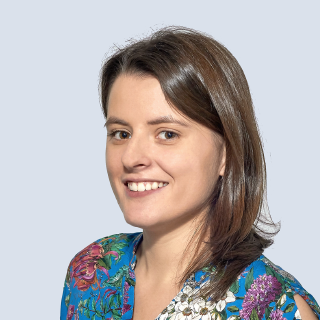Choosing the right type of contract is essential for your project to be successful. When it comes to software development, the majority of companies offer two pricing models - Fixed Price (FP) and Time and Materials (T&M). Which one will be the most profitable for your business?
It’s not always easy to decide. With this article, we want to give you a helping hand! We will point out the characteristics of both models, their advantages and disadvantages, as well as share our practical experience. Read on and let us know if you have any questions!

Fixed Price
In order to start a project in the FP model, a detailed specification and a precise project scope are absolutely necessary. What you get in the contract is a strictly defined price for the entire project. All the negotiations and arrangements are to be made beforehand and therefore the project’s scope is not subject to any changes. Modifying anything about the project may require a whole new estimation and an additional agreement.
It is worth mentioning that you're not left all by yourself after the project in the FP model is completed. An essential part of the contract is the guarantee of support. As usual, it's defined individually, depending on the character of the project. For example, the agreement can state that the development team has 30 days after finishing the project to fix the bugs and after that period they will fix only critical issues for another 90 days. The response time is also set - the team may have e.g. 7 to 10 days to take action after the bug is reported.
This model works best for projects with precise requirements, clear limitations and deadlines. It might be the one for you if you don’t like surprises and you need to stick to a very tight budget. When you want to create a small project, build an MVP or develop a solution with clear and detailed specs, a fixed-price contract will be a good choice.
The advantages:
▶ It's predictable - Defining everything upfront assures that all sides of the contract know the requirements and what it takes to complete them – and of course how much it will cost. Nothing more, nothing less.
▶ It’s calculable - You will get to know the cost of the project ahead of time which makes it easier to control the overall budget of your business. The sum is usually divided into a few payments that are planned regularly and reflect the percentage of the completion of the project.
▶ It’s easy to manage - All is planned in advance and therefore organized. As there’s no possibility to change the project requirements, there’s no need for long discussions about the possible solutions. The scope is clear, so the development process will follow it accordingly.
The risks:
■ No flexibility - When you realize you need to add or remove a certain functionality, it will be impossible to do so, as it's not set in the contract - unless you're ready for additional charges. Being unable to adjust the agreement to the project's development over time might make you feel you pay too much for the thing you don't really want to be completed.
■ No room for improvement of the specs – You can’t fix the flaws of the initial specification on the go. If you come up with an idea how to improve it to create a better final result of your project, you will need to pay extra for it.

Time and Materials
In the T&M model, you’re charged a defined hourly rate, plus the cost of materials. You don’t have to define the detailed scope, set strict deadlines or establish the exact budget for the whole project (although it may be helpful if you need to control your expenses). You can adjust it all on the go, as well as modify the specs and add more features with time.
The process of development is continuous, therefore it allows to report the bugs and fix them immediately. You get a dedicated team for the project that will take care of any issues and support the project constantly.
This type of contract is often praised by software development companies as compatible with the dynamism of the development process and the agile principles. It will be a good choice for complex digital products and long-term projects, when it’s expected that their size or requirements would most likely change.
The advantages:
▶ Flexibility – You’ll always have the opportunity to change some parts of the project on the go to get the ultimate final product, all nice and polished.
▶ Control – You will always know exactly what’s going on at a given moment and at what stage your project is. You can actively take part in the development process, make changes and discuss everything with the team.
▶ Efficiency – T&M model allows both the team and the client to see the precise amount of time needed to complete a certain step or release a feature. It can be really motivating and may help with adjusting the project’s schedule.
The risks:
■ Losing control of the budget – When you don’t set (even just for yourself) any limits, it’s easy to spend more money than you initially planned, adding a new feature here or there. The overall cost of the project may go beyond anything you expected if you don’t track the expenses closely.
■ Deep involvement in the process – You can’t just pay and get the final product. The T&M model requires a lot of interactions between the client and the development team. Make sure you’ll have enough time and energy for it all!

So who’s the winner?
There can be only one answer: IT DEPENDS. Even though we explained the two models as oppositions, it doesn’t have to be this way. They can be two stages of your project that perfectly complement each other. It’s all about the balance between precision and flexibility.
Once you made the decision about the type of contract, remember it’s not set in stone. Although we generally agree that the T&M model works better with agile software development than an FP contract, it really depends on a particular project. And no one said you can’t change the contract type after your project reaches a certain stage! We’ve developed quite a few digital products in the FP model, and after finishing the first version of the app we switched to T&M. It helped us develop some additional features for the product and get the result the client asked for.

Where does the money go?
Clients often prefer the FP model – they feel safer defining everything about the project in advance. Even though it might seem a better solution for your budget, the FP contract can be eventually more expensive than the T&M one - even by 20-25%! How is that?
Sometimes, when you complete a project in the FP model, you end up with a solution that still needs improvements, as the initial scope had flaws and imperfections. Of course, a reliable software development partner can suggest possible advancements before you start the project, but there are things we cannot foresee, and problems that might arise only during the development phase. In the FP model, you can't adjust the project on the go and even though the guaranteed support can fix some bugs, you might still get a digital product that doesn't meet your expectations. If you had chosen the T&M model from the beginning, you could have made all the changes you need, correcting the flaws right away.
With the FP contract, some issues can be solved thanks to the buffer - but again, although it was defined before starting the project, it's an additional cost you could have avoided with the T&M model. The buffer does reduce the risk if anything unplanned occurs, but if "anything unplanned" turns out to be a significant change in the whole project, the only way out of this situation is a completely new contract. As you can see, over the long haul the FP model will still be more expensive than the T&M one.

Another thing that can elevate the total cost of a project on an FP contract is the additional charge for preparing the technical documentation. Some clients confuse it with the project scope, but it's a completely different story. Generally speaking, the project scope is a high-level overview of the project. With technical documentation the name speaks for itself - it's a detailed (!) specification covering all the technical aspects of the project. Preparing technical documentation takes time and requires specialized knowledge. If the client can't provide the development partner with such documentation, it will be necessary to pay extra for it.
Trust is the answer
All the technical details and financial aspects are important. But what really helps in every difficult situation is simply good communication. No matter if it's Fixed Price or Time and Materials, transparency is indispensable for the project to succeed. For us, no technical skills can replace these qualities, as they lay a solid foundation for a truly reliable business partnership. When both sides of the contract trust each other and communicate openly about everything concerning the project, even the hardest issue can be solved.
If you’re still not sure what would be the best decision in your case, feel free to contact us! We know well that each project is a different story and requires an individual approach. We’ll be more than happy to help you and suggest the best solution for your business.
You may be also interested in:
➤ How much does it cost to build a mobile app for your business?
➤ Keep it confidential. Our approach to white label and NDAs
➤ How to create a project roadmap. A step-by-step guide











 Angry Nerds (Poland)
Angry Nerds (Poland) Angry Nerds (USA)
Angry Nerds (USA) Angry Nerds (Canada)
Angry Nerds (Canada)



